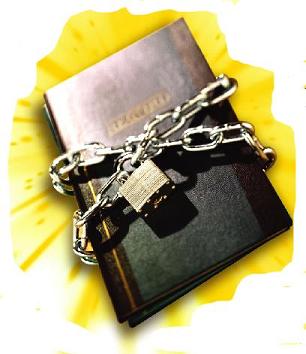Chilling the Net: The Anti-Piracy Obsession in Australia

It has been an enduring question: how to monetise ideas and intellectual property, and ring them in an effort to stave off the imitators and pilferers. In this view, ideas are not to be shared so much as loaned on interest, or transferred by fee. The central result of this will always be the same: censorship, restriction, and limits. These moves are always framed as protective ones, whether to the consumer, or the creator of that copyrighted material.
Australia is a country very much interested in the anti-piracy push. It should hardly come as surprising to a country with a notorious love affair for censorship, at one point on par with provincial Ireland in its prudish desire to ban.
The Copyright Amendment (Online Infringement) Bill 2015, the handiwork of Communications Minister Malcolm Turnbull, has passed in the Australian senate with bipartisan support. The result was 37-13. Its stated aim is to curb online privacy of television shows and film. Its unmentioned consequence will be control and censorship.
The CAOI Act grants rights holders means to obtain orders to make Internet Service Providers take down objectionable sites. As Vanessa Hutley, General Manager of Music Rights Australia explained with satisfaction, “The new section 115A gives copyright owners the ability to apply for court orders against illegal offshore sites whose primary purpose is copyright infringement.”[1]
As with so many things in this field, censorship can be moralised on several levels. “We thank the Government and the Opposition for supporting this important legislation and through it showing their support for the creative industries which are such an important pat of Australia’s cultural and economic life.”
The anti-piracy drive tends to be a form of political drag. Take the dress off, and you have the face and gnarled body of a state mandated censor. The ultimate point behind this exercise is controlling the Internet. While the European Union, as with other political entities, has had trouble with this concept, eight of its member states could still say in a letter to European Council president Donald Tusk that regulation should only occur “where there is clear evidence to do so.”[2]
Indeed, the European Commission’s president, Jean-Claude Juncker, has made reforming its approach to the Internet a vital part of job creation in what has been deemed a digital single market strategy. This entails reducing barriers in terms of blocking online video consumption and a reform of copyright rules.
Not so in Australia, where the reverse is true. A tendency exists to be terrified by the Internet, with all its corrupting promise. The result is an enforced immaturity and celebrated paternalism from a dowdy, frightened political class. “There are 3.4 billion people plus in the world using the Internet,” observed a worried government Senator Nicola Marino. “At least 1.3 billion use Facebook. There are tens of thousands of websites, many with absolutely no encryption and no protection of any sort.”[3]
What frightening prospects, suggests the Senator. “This is the environment people are in. The 3.4 billion using the Internet often have no idea what they are exposing themselves to or their systems to when they engage in this space.” Whatever can be done about restricting people’s choice to view the Internet?
If one was to consult the views of libertarian senator David Leyonhjelm, the very idea of blocking sites serves little purpose with damaging effect. “Website blocking is a drastic remedy and a blunt tool. The bill has the potential to be used against a range of legitimate sites and has inadequate protections for non-party interests.”
Greens Senator Scott Ludlam also feels that artists will not necessarily get paid for their work under this new regime. The bill, rather, was a Trojan horse of broader regulatory purpose. “This poorly drafted bill may open the way for the courts to criminalise the legitimate use of VNPs, will be trivial to circumvent, wide open to scope-creep in the future and does nothing to advance genuine copyright reform.”[4]
What other politicians speaking in favour of the bill have argued for is a normalcy of self-censorship. Eventually, the Australian example will take root in cyber soil, encouraging those providing content to gag and remove when needed. (In truth, countries such as Russia and Turkey already have similar laws of blocking and taking down sites.)[5] Initial court actions will, Senator David Coleman regrettably observes, take place. There will be “court orders issued for take down notices for infringing material.”
Over time, however, “ISPs and content providers will work together in a sensible way.” Sensibility is the pseudonym of the censor – be sensible, and the rest will hopefully wake up to their fiendish ways. The courts will, in time, be unnecessary, as “content providers and ISPs will take down offending material” in a cooperative fashion “as it should be”.
Gazing into the looking glass, and the behaviour of the major parties towards such copyright meddling provides us a picture framed by the intentions of the Trans-Pacific Partnership. The supposed free trade provisions in the Trans-Pacific Partnership under negotiation have little to do with free trade and much to do with placing limits on it. Perhaps the latest bill is but a nasty taster of things to come, having little to do with quality and content, but everything to do with restraint and limitation.
Dr. Binoy Kampmark was a Commonwealth Scholar at Selwyn College, Cambridge. He lectures at RMIT University, Melbourne. Email:[email protected]
Notes:
[1] http://www.tonedeaf.com.au/
[2] http://www.itnews.com.au/News/
[3] https://www.eff.org/deeplinks/2015/06/users-betrayed-australia-adopts-copyright-censorship-regime
[4] http://scott-ludlam.greensmps.
[5] http://www.wipo.int/wipolex/

